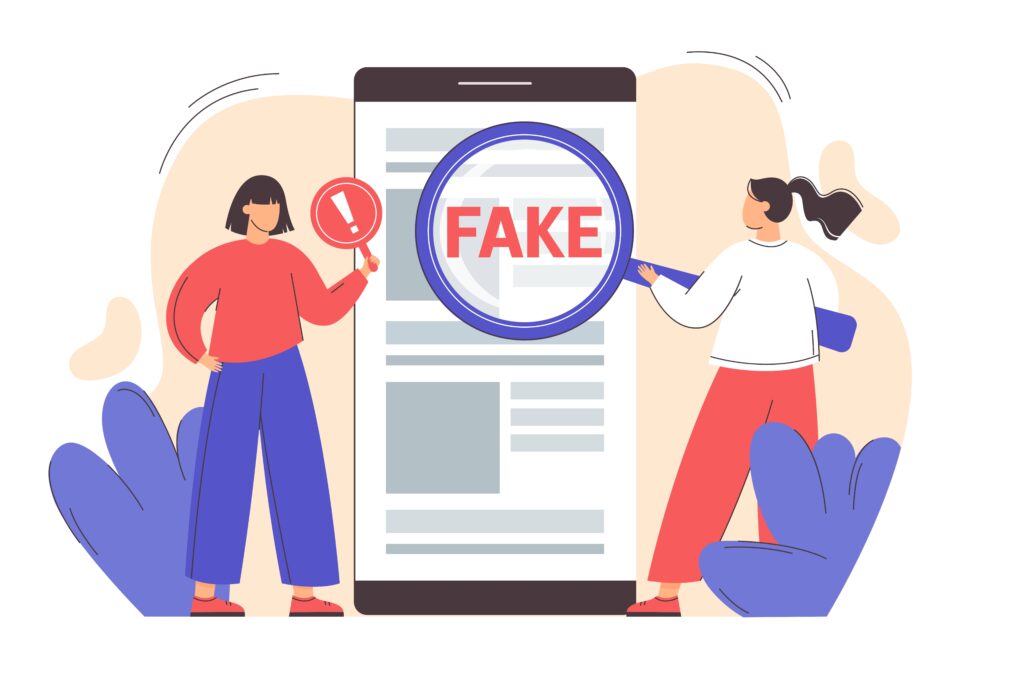[et_pb_section fb_built=”1″ admin_label=”section” _builder_version=”4.17.0″ custom_margin=”0px||0px||false|false” custom_padding=”0px||0px||false|false” global_colors_info=”{}”][et_pb_row admin_label=”row” _builder_version=”4.17.0″ background_size=”initial” background_position=”top_left” background_repeat=”repeat” width=”100%” custom_margin=”||||false|false” custom_padding=”0px||0px||false|false” global_colors_info=”{}”][et_pb_column type=”4_4″ _builder_version=”4.16″ custom_padding=”|||” global_colors_info=”{}” custom_padding__hover=”|||”][et_pb_text _builder_version=”4.17.0″ _module_preset=”default” global_colors_info=”{}”]
“A positive experience today, a loyal following tomorrow.”
When it comes to your business, never underestimate the impact of a positive customer experience. Happy customers are more than just a one-time deal; they can transform into loyal advocates who boost your revenue and spread the word about your brand.
And guess what? The most potent marketing isn’t an expensive campaign—it’s a customer who raves about your business, becoming a walking advertisement for your brand.
How you see customer experience can shape your entire business perspective. That’s why creating an exceptional customer experience isn’t just a bonus—it’s a must. Whether you’re already acing this or looking to level up, diving into positive customer experiences can work wonders for your business reputation.
So, let’s explore and understand the significance of Positive Customer Experience in ORM.
[/et_pb_text][et_pb_text _builder_version=”4.17.0″ _module_preset=”default” global_colors_info=”{}”]
“Positive customer tales: the heartbeats of a thriving online reputation.”
[/et_pb_text][et_pb_text _builder_version=”4.17.0″ _module_preset=”default” custom_margin=”0px||||false|false” custom_padding=”0px||||false|false” locked=”off” global_colors_info=”{}”]
What is customer experience?
- Customer experience is like the heartbeat of your brand. It’s the sum total of every touchpoint a customer has with your business, right from discovering it to making a purchase.
- Customer experience encompasses every interaction during their journey with your company. From that first “hello” to becoming a repeat buyer, it shapes how they perceive you.
[/et_pb_text][et_pb_text _builder_version=”4.17.0″ _module_preset=”default” custom_margin=”0px||||false|false” custom_padding=”0px||||false|false” locked=”off” global_colors_info=”{}”]
Why Positive Customer Experience?
Let’s dive into why a positive customer experience could be your trump card:
- Happy customers all around: Companies stepping up their game in customer satisfaction are creating a consistently amazing experience at every step of the customer journey.
- Sticking around for the long haul: A positive customer experience isn’t just a gold star on a company’s report card. It’s a magnet for customer loyalty, setting you apart from rivals and boosting customer retention.
- Kicking customer churn to the curb: Guess what’s often to blame for customers walking out the door? Not high prices, but lacklustre customer service.
- Winning the competitive race: A top-notch customer experience isn’t just a trophy; it’s a shiny competitive edge. The race is on between lower prices and a more enjoyable customer journey.
- Boosting those sales: Customers love to do business with companies that make them smile. And you know what that does? It supercharges your sales and ramps up your profits.
[/et_pb_text][/et_pb_column][/et_pb_row][et_pb_row _builder_version=”4.17.0″ _module_preset=”default” width=”100%” custom_margin=”||||false|false” custom_padding=”0px||0px||false|false” collapsed=”on” global_colors_info=”{}”][et_pb_column type=”4_4″ _builder_version=”4.17.0″ _module_preset=”default” global_colors_info=”{}”][et_pb_text _builder_version=”4.17.0″ _module_preset=”default” global_colors_info=”{}”]
How to Make a Great Customer Experience?
[/et_pb_text][/et_pb_column][/et_pb_row][et_pb_row column_structure=”1_2,1_2″ _builder_version=”4.17.0″ _module_preset=”default” width=”100%” custom_margin=”||||false|false” custom_padding=”0px||0px||false|false” collapsed=”on” global_colors_info=”{}”][et_pb_column type=”1_2″ _builder_version=”4.17.0″ _module_preset=”default” global_colors_info=”{}”][et_pb_text _builder_version=”4.17.0″ _module_preset=”default” custom_margin=”0px||||false|false” custom_padding=”0px||||false|false” global_colors_info=”{}”]
Ø Building Trust through Customer-Centricity:
Putting the customer at the centre of your business is the cornerstone of a positive ORM strategy. By focusing on their needs, preferences, and pain points, you create a sense of trust that extends across digital platforms. This trust becomes a fortress against negative sentiments, as satisfied customers tend to speak up for your brand.
Ø Turning Customers into Advocates:
A positive experience doesn’t just end with a transaction; it continues to reverberate as customers become your biggest advocates. When they share their positive encounters online, their words become authentic testimonials that amplify your reputation. This organic advocacy fuels your ORM efforts, building a positive image.
Ø Addressing Customer Concerns Promptly:
ORM is not just about celebrating the wins; it’s also about addressing customer concerns with speed and empathy. When customers feel heard and their issues are resolved swiftly, it showcases your dedication to their satisfaction. This responsiveness converts potentially negative situations into positive outcomes.
Ø Crafting Personalized Interactions:
Personalization isn’t limited to marketing; it’s a crucial aspect of ORM. By tailoring your interactions to individual preferences, you create a connection that resonates deeply. These personalized experiences stick in the minds of customers, influencing how they perceive your brand.
[/et_pb_text][/et_pb_column][et_pb_column type=”1_2″ _builder_version=”4.17.0″ _module_preset=”default” global_colors_info=”{}”][et_pb_text _builder_version=”4.17.0″ _module_preset=”default” custom_margin=”0px||||false|false” custom_padding=”0px||||false|false” global_colors_info=”{}”]
Ø Turning Negatives into Positives:
A negative review or feedback doesn’t have to spell disaster. In fact, handling such situations with grace can elevate your ORM game. When you address negative comments professionally and offer solutions, you showcase your commitment to improvement. This proactive approach can turn unhappy customers into loyal ones.
Ø Leveraging Customer Feedback for Growth:
Your customers hold a wealth of insights that can shape your ORM strategy. By actively seeking feedback and using it to enhance your offerings, you demonstrate a willingness to evolve. This commitment to growth resonates with customers and enhances your reputation.
Ø Consistency Across Channels:
Maintaining a consistent positive experience across all digital touchpoints is vital. Whether it’s your website, social media, or review platforms, every interaction should reflect your brand’s values and commitment to excellence.
Ø Staying Ahead with Innovation:
Embracing technological advancements can enhance your ORM efforts. Utilizing AI and machine learning to analyse customer sentiment can help you fine-tune your strategy. Embrace the tools available to ensure your customer experience remains top-notch.
[/et_pb_text][/et_pb_column][/et_pb_row][et_pb_row _builder_version=”4.17.0″ _module_preset=”default” width=”100%” custom_margin=”||||false|false” custom_padding=”0px||0px||false|false” collapsed=”on” global_colors_info=”{}”][et_pb_column type=”4_4″ _builder_version=”4.17.0″ _module_preset=”default” global_colors_info=”{}”][et_pb_text _builder_version=”4.17.0″ _module_preset=”default” global_colors_info=”{}”]
“Customer experiences shape brands, and brands shape the future.”
[/et_pb_text][/et_pb_column][/et_pb_row][et_pb_row _builder_version=”4.17.0″ _module_preset=”default” width=”100%” custom_margin=”||||false|false” custom_padding=”0px||0px||false|false” collapsed=”on” global_colors_info=”{}”][et_pb_column type=”4_4″ _builder_version=”4.17.0″ _module_preset=”default” global_colors_info=”{}”][et_pb_text _builder_version=”4.17.0″ _module_preset=”default” global_colors_info=”{}”]
Summing Up:
To wrap it up, underestimating the impact of a positive customer experience could prove disastrous for your business.
The value of a positive CX shines through in increased retention, unwavering loyalty, and a stream of repeat transactions.
Remember, prioritizing customers is key. Respond with kindness and treat them with dignity. If you’re keen on them hearing you out, be prepared to lend them an ear. It might take time, but with the right customer experience management strategies, cultivating a two-way relationship becomes second nature.
Speaking of which, if you’re on the lookout for a partner who truly understands the power of positive customer experiences, look no further than AiPlex. Our proficiency in unlocking the potential of CX can set you apart in the competitive arena, nurturing customer devotion and propelling your brand to remarkable accomplishments.
Experience excellence with Aiplex
[/et_pb_text][/et_pb_column][/et_pb_row][/et_pb_section]
















